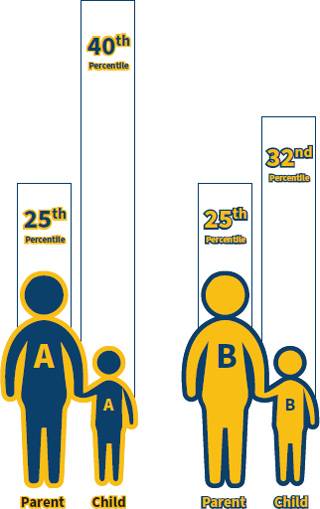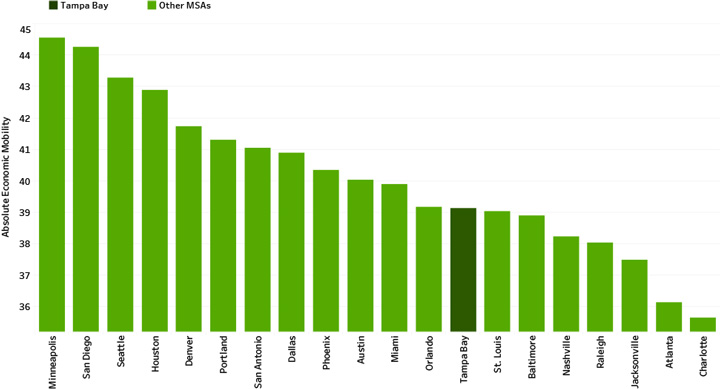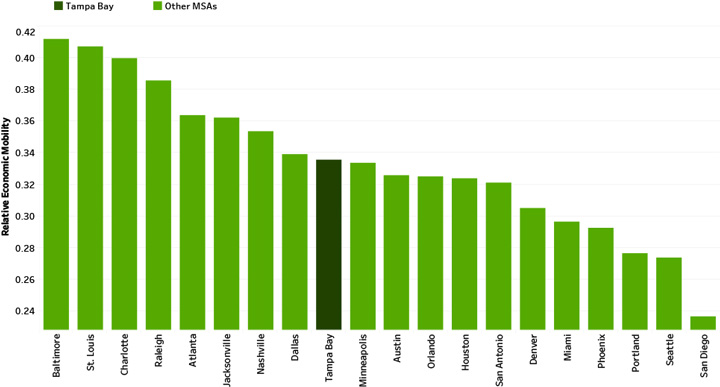2021 E-Insights Report
Economic Mobility
Economic mobility broadly captures the ability of people to move from a lower income stratum to higher income strata. This is measured using two variables: Absolute mobility and relative mobility.

Absolute Economic Mobility
One way of determining absolute economic mobility is to examine the average income
percentile of children whose parents were at the 25th percentile of the national income
distribution. If the children are at a higher income percentile than 25, then it indicates
that there has been positive economic mobility. The higher the income percentile of
the children, the higher the absolute economic mobility. For example, if, in region
A, the children of parents who were at 25th percentile are at the 40th percentile,
and in region B, the children of parents who were at 25th percentile are at the 32nd
percentile, then one can conclude that region A has
experienced higher economic mobility than region B.
“The Opportunity Atlas” is an interactive database with a user-friendly tool to assess the economic mobility across various regions in the United States. This tool provides an in-depth understanding of how the average outcomes (for example, household income) of children varied by demographic subgroups.
“Which neighborhoods in America offer children the best chance to rise out of poverty?” is the kind of question can be answered by using data from the Opportunity Atlas.
The research paper “The Opportunity Atlas: Mapping the Childhood Roots of Social Mobility,” by Raj Chetty, John N. Friedman, Nathaniel Hendren, Maggie R. Jones and Sonya R. Porter, provides detail on how this publicly available dataset was constructed to examine children’s outcomes in adulthood using anonymized longitudinal data covering nearly the entire U.S. population. The sources of data used in this process were (1) the U.S. Census 2000 and 2010 short forms; (2) federal income tax returns from 1989, 1994, 1995 and 1998-2015; and (3) the U.S. Census 2000 long form and the 2005-2015 American Community Surveys.
Relative Economic Mobility
Relative mobility refers to the expected difference in the income percentile rank of children belonging to two parents whose income percentile rank differs by one unit.
For example, consider region A, with relative economic mobility of 0.2. This implies that the gap in income percentile of children of parents at the 10th percentile of income distribution and those of the parents at the 20th percentile is going to be, on average, 2. Hence, the children of these parents are closer to each other in their (percentile) ranks within their cohort, compared to how close the parents were to each other in their (percentile) ranks within their cohort. Relative economic mobility is often used to check how much individuals “move” across income percentile ranks as compared to their parents.
Insights
- The Tampa Bay region is ranked No. 13 in terms of absolute economic mobility.
- Minneapolis achieved the highest absolute economic mobility among all MSAs considered for this study.
Absolute Economic Mobility

Relative Economic Mobility
